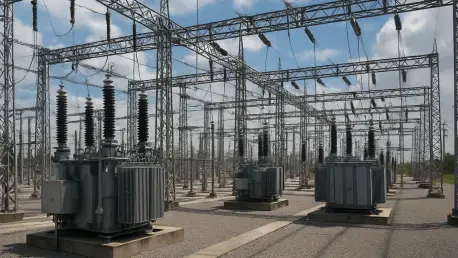Introduction
Puerto Rico’s journey from a shattered energy grid to a pioneering model of sustainability stands as a remarkable testament to human resilience and technological innovation, especially after enduring the longest blackout in U.S. history following Hurricane Maria in 2017. The island faced an urgent need to rethink its outdated, centralized power system, choosing not to simply rebuild what was broken but to embark on a bold path toward renewable energy and decentralized power, leveraging residential solar panels and home batteries to create a virtual power plant. This timeline chronicles key events in this transformation, highlighting how adversity became a catalyst for change and offering a blueprint for other regions grappling with aging infrastructure and climate challenges.
Key Milestones in Puerto Rico’s Energy Evolution
2017 – Hurricane Maria Devastates the Grid
In September 2017, Hurricane Maria struck Puerto Rico with unrelenting force, decimating an already fragile power grid managed by the Puerto Rico Electric Power Authority (PREPA). The storm left nearly the entire island without electricity, plunging millions into darkness for months in what became the longest blackout in U.S. history. Decades of neglect, underfunding, and dependence on imported fossil fuels had weakened the centralized system, exposing its inability to withstand such a disaster. This catastrophic event served as a critical wake-up call, prompting residents, policymakers, and stakeholders to demand a fundamental overhaul of the island’s energy infrastructure, prioritizing resilience over temporary fixes.
2019 – Act 17 Sets a Renewable Energy Vision
By 2019, Puerto Rico took a decisive step forward with the passage of Act 17, a landmark law mandating a transition to 100% renewable energy by 2050. The legislation established interim targets of 40% renewable energy by 2025 and 60% by 2040, rejecting a return to fossil fuel dependency. It promoted rooftop solar installations and battery storage as key components of a decentralized energy framework, while also restructuring the sector by separating power generation from transmission and distribution. This policy not only signaled a commitment to sustainability but also created a foundation for widespread adoption of distributed energy resources, setting the stage for innovative grid solutions.
2021 – LUMA Energy Takes Charge of Grid Modernization
In 2021, a significant shift occurred when LUMA Energy, a consortium of private companies, assumed control of Puerto Rico’s transmission and distribution system through a public-private partnership. Tasked with modernizing a dilapidated grid, LUMA brought much-needed expertise and investment to tackle long-standing inefficiencies. At this point, residential solar installations already accounted for over 10% of the island’s electricity, and LUMA’s role became crucial in integrating these distributed resources into a unified network. Their leadership laid the groundwork for programs that would balance supply and demand, ensuring that decentralization strengthened rather than destabilized the grid.
2023 – Launch of the Customer Battery Energy Sharing (CBES) Program
The year 2023 marked a turning point with the launch of the Customer Battery Energy Sharing (CBES) program, positioning Puerto Rico as a leader in virtual power plants. Spearheaded by LUMA Energy, CBES aggregates residential battery storage into a cohesive resource, enabling the grid to draw power from home batteries during peak demand or low generation periods. With over 81,000 customers enrolled, it became the largest behind-the-meter virtual power plant in the U.S. Participants receive financial incentives of up to $600 per battery, while contributing to grid stability—evidenced by the program’s delivery of 48MW during a critical summer shortfall. This initiative empowered communities, turning residents into active partners in energy management.
Conclusion
Looking back, Puerto Rico’s energy transformation unfolded through pivotal milestones that turned a crisis into an opportunity for reinvention. From the devastation of Hurricane Maria in 2017 to the visionary framework of Act 17 in 2019, the strategic partnership with LUMA Energy in 2021, and the groundbreaking CBES program launch in 2023, each step built toward a more resilient and sustainable grid. These achievements demonstrated that decentralized, community-driven solutions could address systemic vulnerabilities. For those seeking deeper insights, exploring resources on virtual power plants and renewable energy policies could provide valuable context. Moving forward, addressing scalability challenges and ensuring equitable access in remote areas should remain priorities to sustain this momentum.









